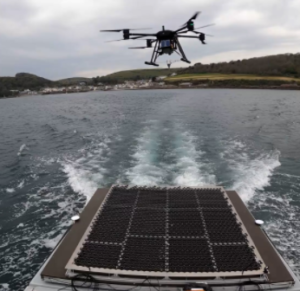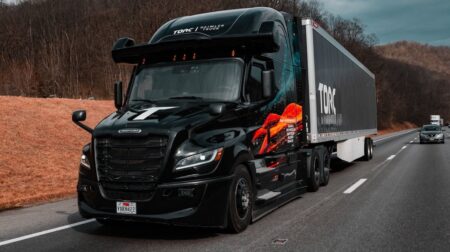A UK project has proven the concept for robotic teams repairing offshore wind farms following two years of work.
The MIMRee project, which was funded by Innovate UK, has concluded this month and reported on its work to develop an autonomous robotic team for inspecting and repairing offshore wind farms.
According to the £4m project, its team of academics and technology developers have successfully proven and demonstrated the core technologies at the heart of the concept.
Under the MIMRee scenario, a Thales autonomous mothership detects defects in wind farm blades using an onboard inspection system which can scan the structure of the blades while they are turning. The mothership then signals the blades to stop, from speeds of up to 200mph at the tips, before launching a specially adapted drone.

The drone is able to carry a six-legged ‘blade crawler’ robot that will carry out any needed repairs.
The Offshore Renewable Energy (ORE) Catapult, which led the project, believes that within 10 years this scenario will be feasible at offshore wind farms.
Ben George, who leads ORE Catapult’s Operations and Maintenance Centre of Excellence, said: “Today, conditions at sea make human-only missions subject to safety risks, delays, cancellations and extensive turbine downtime.
“This will not be a feasible way of running the super-sized offshore power stations of tomorrow that lie in deep waters hundreds of miles from shore.”
The project aims to have robots working semi-autonomously, under the remote supervision of operators and will only require technicians for intervention offshore when essential within a decade.
Furthermore, the project thinks that by 2050 such a system could be capable of planning its own missions and conduction them autonomously at ‘wind farms of the future’ which are designed to be repaired by resident robots.
ORE Catapult estimates that this move will shift workers from hazardous environments at sea to onshore control rooms. It also predicts a reduction in energy costs by 10%, as well as a 27% decrease in operating expenses.
“This is not just a way for the sector to reduce costs, it is essential if the offshore wind industry is to achieve the scale of expansion needed for Net Zero,” added George.







